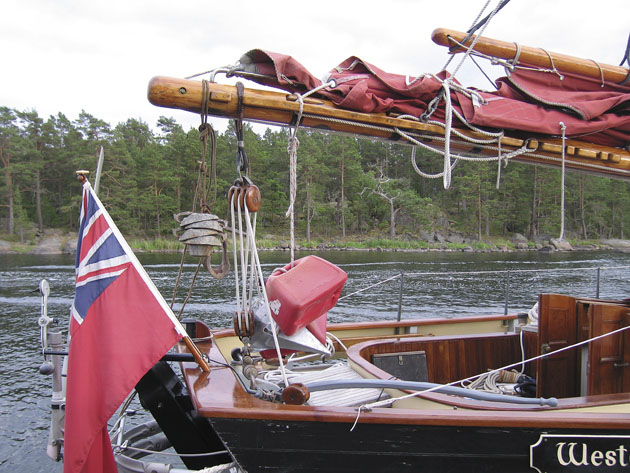It’s been a long time since Tom Cunliffe sailed south in June. Why go to Spain, he argues, when there’s solitude, astonishing scenery and around 20 hours of sunshine a day in the Swedish Baltic?
BALTIC TIPS
Spar buoys
The Baltic Sea specialises in spar buoys. They aren’t always specified on the chart and are often small and tricky to spot, so watch out when you’re trying to find a buoy – detail someone to look out if you can spare the crew and don’t forget to clean the binoculars.
Box berths
Swedish yachts have those rubbing strakes on topsides because it’s easy to graunch your boat in a ‘box berth’. Fenders help, but they often pop out, especially if you’re short-handed.
An alternative if you don’t happen to own a Hallberg-Rassey or a Najad is a length of cheap heavy rope – run it along both sides from bow to stern when you come in. In some countries, free box berths are indicated by a red or a green label: green, go ahead and secure; red, find somewhere else.
Head-up to the rocks
This is the classic Baltic mooring technique: lay an anchor out astern as you approach, then step off the bows on to the rocks, which plummet away smoothly into deep water. Secure your bows to a tree or ring and haul off a yard or so. Job done.
Rubbish – no problem
Getting rid of your garbage in the Stockholm Archipelago is a breeze. Most islands have small dumpsters discreetly tucked away. They’re also marked on the chart, so are easy for us visitors to find.
Reel in the hook
Swedes and Danes often set their anchors on tape rather than rope. It’s easier to stow and surprisingly strong. A reel mounted on to the aft pushpit makes stowing the rode a breeze.
Step off in style
A stowable bow ladder makes a huge amount of sense up north – many marina berths require you to come in bow-to and clambering off when you moor on to rocks can be a trauma without one.
Currents in the non-tidal sea
Although the southern Baltic tends to empty out via The Sound at Copenhagen, what current there is elsewhere usually runs with the wind. Even The Sound and the Danish islands can be affected by this (although things may be complicated by local topography). Be ready for the effect – it means that when you’re beating, you’ll often be against a non-reversing stream.
Stick on an arrow
Channels though the islands can be so tortuous it is easy to lose the plot on your chart. Buy a red Post-it-style arrow and shunt it from buoy to buoy as you proceed, so you can find instantly where you are when you return to the chart.
Getting off when you’re on
Sail in the Baltic for long enough and you’ll hit a rock, very likely uncharted, and there’s no tide to help you float off. It’s worth pre-planning which weights to hang from your boom end when you swing it out to induce a heel and reduce draught.
This is an extract from a feature in Yachting World May 2014






